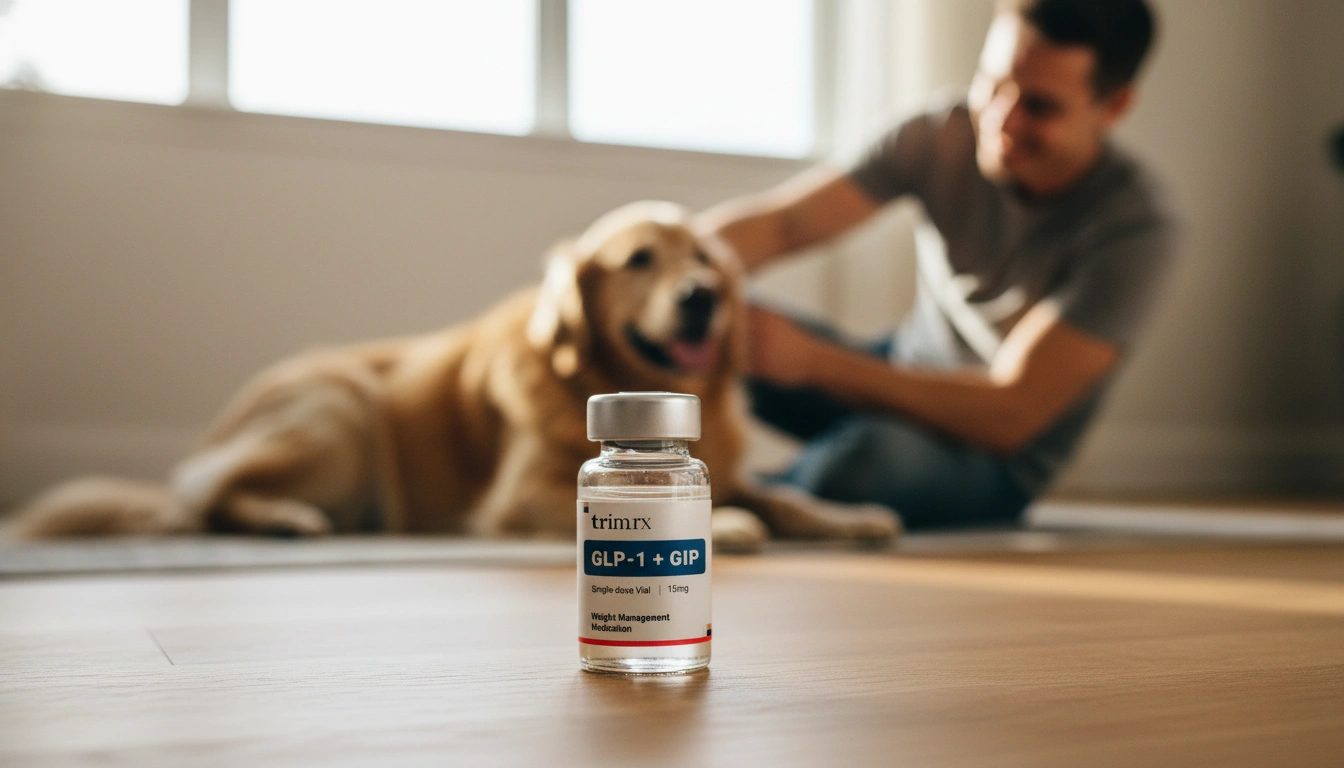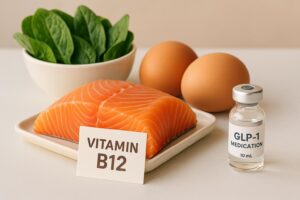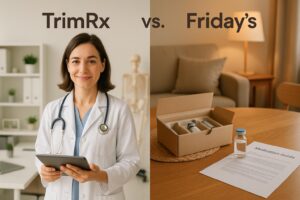What Not to Eat on GLP-1: Navigating Your Dietary Choices Wisely

Introduction
Did you know that nearly 70% of adults in the United States are considered overweight or obese? As we strive to combat this growing epidemic, an increasing number of individuals are turning to GLP-1 medications such as Semaglutide (Ozempic, Wegovy) and Tirzepatide (Mounjaro, Zepbound) as a part of their weight loss journey. While these medications have shown promising results in promoting weight loss and managing blood sugar levels, they also come with their own set of dietary implications.
Understanding what not to eat on GLP-1 medications is crucial for minimizing side effects and optimizing the weight loss process. In this blog post, we will explore the foods to avoid while on GLP-1 therapy, the reasons behind these dietary restrictions, and the best practices to ensure a balanced diet that supports your health goals.
By the end of this article, you will have a comprehensive understanding of the dietary adjustments necessary when taking GLP-1 medications, empowering you to make informed choices that align with your weight loss journey. We will discuss food categories to limit, the rationale behind these choices, and practical strategies for maintaining nutritional balance.
Join us as we navigate through the dietary landscape while on GLP-1 medications, aiming to make sustainable weight loss attainable and tailored to your individual needs.
Understanding GLP-1 Medications
To appreciate the dietary restrictions associated with GLP-1 medications, it’s essential to understand how they work. GLP-1, or glucagon-like peptide-1, is a hormone produced in the intestines that plays a vital role in regulating appetite and blood sugar levels. GLP-1 medications mimic this hormone, helping to control hunger, slow gastric emptying, and enhance insulin secretion.
While these medications can be powerful tools for weight loss, their effects on digestion can lead to side effects such as nausea, vomiting, and bloating. Thus, what we choose to eat becomes increasingly important.
Foods to Avoid on GLP-1
1. High-Fat Foods
Why Avoid: High-fat foods, particularly fried or greasy options, can exacerbate gastrointestinal discomfort. These foods take longer to digest, which can lead to feelings of nausea and bloating when combined with the delayed gastric emptying caused by GLP-1 medications.
Examples:
- Fried foods (e.g., french fries, fried chicken)
- Heavy cream sauces
- High-fat cuts of meat (e.g., bacon, fatty beef)
- Processed snacks (e.g., chips, cookies)
Strategy: Instead of high-fat meals, opt for lean protein sources and cooking methods that involve grilling, baking, or steaming. This can help reduce the risk of gastrointestinal discomfort while still providing essential nutrients.
2. Sugary Foods and Beverages
Why Avoid: Foods high in sugar can lead to rapid spikes in blood sugar levels, which can be counterproductive to the goals of weight management and overall health. Moreover, sugary foods often lack essential nutrients and can contribute to feelings of hunger shortly after consumption.
Examples:
- Sodas and sweetened beverages
- Candies and chocolates
- Pastries and desserts
Strategy: Choose whole foods with natural sugars, such as fruits, and consider healthier alternatives for sweet cravings, like dark chocolate or fruit-based desserts.
3. Starchy Vegetables and High-Glycemic Index Foods
Why Avoid: Starchy vegetables such as potatoes and corn can lead to increased blood sugar levels due to their higher carbohydrate content. Similarly, foods with a high glycemic index can cause fluctuations in energy levels and hunger.
Examples:
- Potatoes, corn, and peas
- White bread and pasta
- Rice and other refined grains
Strategy: Incorporate non-starchy vegetables such as leafy greens, broccoli, and bell peppers into your meals. Whole grains like quinoa and barley can also be excellent substitutes that offer fiber and nutrients without the blood sugar spikes.
4. Processed and Ultra-Processed Foods
Why Avoid: Processed foods often contain unhealthy fats, sugars, and preservatives that can hinder weight loss efforts and provoke gastrointestinal issues. Additionally, they tend to be lower in nutrients.
Examples:
- Fast food and takeout meals
- Packaged snacks (e.g., chips, pretzels)
- Microwaveable meals
Strategy: Focus on preparing fresh, whole foods at home. Meal prepping can help you avoid the temptation of processed options when time is tight.
5. Alcohol
Why Avoid: Alcohol can worsen side effects like nausea and vomiting while also affecting blood sugar levels. It can also impede weight loss efforts by adding empty calories without nutritional value.
Strategy: If you choose to drink, do so in moderation and consider lower-calorie options. Always prioritize water, herbal teas, or other non-caloric beverages to stay hydrated.
Foods to Embrace While on GLP-1
While we have outlined what not to eat on GLP-1 medications, it’s equally important to highlight the foods that can support your weight loss journey. A balanced diet rich in nutrient-dense foods can help optimize the effects of GLP-1 medications while minimizing side effects.
1. Lean Proteins
Incorporating adequate protein into your diet is vital, as it helps maintain muscle mass and keeps you feeling full longer.
Examples:
- Grilled chicken or turkey
- Fish such as salmon or tuna
- Plant-based proteins like tofu, lentils, and beans
2. Non-Starchy Vegetables
These vegetables are low in calories but high in nutrients and fiber, making them excellent choices for weight loss.
Examples:
- Leafy greens (spinach, kale)
- Cruciferous vegetables (broccoli, cauliflower)
- Bell peppers, zucchini, and asparagus
3. Healthy Fats
In moderation, healthy fats can support overall health and satiety. Opt for sources that are less likely to cause gastrointestinal discomfort.
Examples:
- Avocados
- Nuts and seeds (almonds, chia seeds)
- Olive oil and fatty fish
4. Whole Grains
Whole grains can provide sustained energy and fiber, which is crucial for digestion.
Examples:
- Brown rice, quinoa, and farro
- Oats and barley
5. Hydrating Foods and Fluids
Staying hydrated is essential, especially when experiencing side effects from GLP-1 medications.
Examples:
- Water, herbal teas, and broths
- Water-rich fruits and vegetables (cucumbers, watermelon)
Practical Tips for a Balanced Diet on GLP-1
-
Listen to Your Body: Pay attention to how different foods affect your symptoms and adjust accordingly. Everyone’s tolerance levels will vary, so customization is key.
-
Meal Planning: Plan your meals ahead of time to avoid the temptation of quick, unhealthy options. This also helps ensure you have a balanced intake of nutrients.
-
Consult with Professionals: Working with a registered dietitian can provide personalized guidance tailored to your specific needs and preferences. They can help create a meal plan that aligns with your weight loss goals.
-
Stay Active: Regular exercise complements dietary changes and enhances the effectiveness of GLP-1 medications. Incorporating both cardiovascular and strength-training exercises can be beneficial.
-
Hydration is Key: Aim to drink plenty of water throughout the day to maintain hydration and support digestion.
Conclusion
Navigating dietary choices while using GLP-1 medications can feel overwhelming, but understanding what not to eat can empower you to make better decisions that align with your weight loss journey. By avoiding high-fat, sugary, and processed foods, and by embracing lean proteins, non-starchy vegetables, and whole grains, we can support our health and well-being.
At TrimRx, we believe that sustainable weight loss should be achieved through science, empathy, and transparency. If you’re considering a GLP-1 medication as part of your weight loss strategy, we encourage you to take our free assessment quiz to see if you qualify for our personalized weight loss programs. Together, we can embark on a journey toward healthier living.
FAQ
Can I eat any foods I enjoy while on GLP-1 medications?
While no foods are completely off-limits, moderation is key. Focus on nutrient-dense options that support your goals while limiting high-fat, high-sugar, and processed foods.
How can I manage side effects caused by diet?
If you experience gastrointestinal discomfort, consider adjusting your diet by avoiding problematic foods, eating smaller meals, and consulting a healthcare professional for tailored advice.
Is it necessary to consult a dietitian while on GLP-1 medications?
Yes, working with a registered dietitian can help you create a personalized meal plan that addresses your unique needs and preferences, ensuring you get the nutrients you need while managing side effects.
How often should I eat while taking GLP-1 medications?
Aim for regular meals and snacks to maintain energy levels and prevent excessive hunger. Listening to your body’s hunger cues is important, especially as these medications may suppress appetite.
What should I do if I experience rapid weight loss or feel unwell?
If you notice rapid weight loss or feel unwell, consult your healthcare provider. They can assess your situation and adjust your medication or provide additional recommendations for your diet and lifestyle.
By being mindful of your dietary choices and understanding how they interact with GLP-1 medications, you can create a harmonious balance that promotes effective weight loss and overall health.

Transforming Lives, One Step at a Time
Keep reading
Vitamin B12 and GLP-1 Medications: What to Know
GLP-1 medications can lower B12 absorption and intake; learn symptoms, food sources, supplement options, and how to monitor levels.
Semaglutide Injection Site Reactions: What To Know
Learn why semaglutide injections can cause redness, swelling or nodules, how to prevent and treat them, and when to seek medical care.
TrimRx vs Friday’s
Compare TrimRx and Friday’s telehealth GLP-1 weight-loss programs: pricing, medical support, coaching, delivery, and which fits your needs.



